Home>Articles>Insulation Is Used To Prevent What Heat Transfer
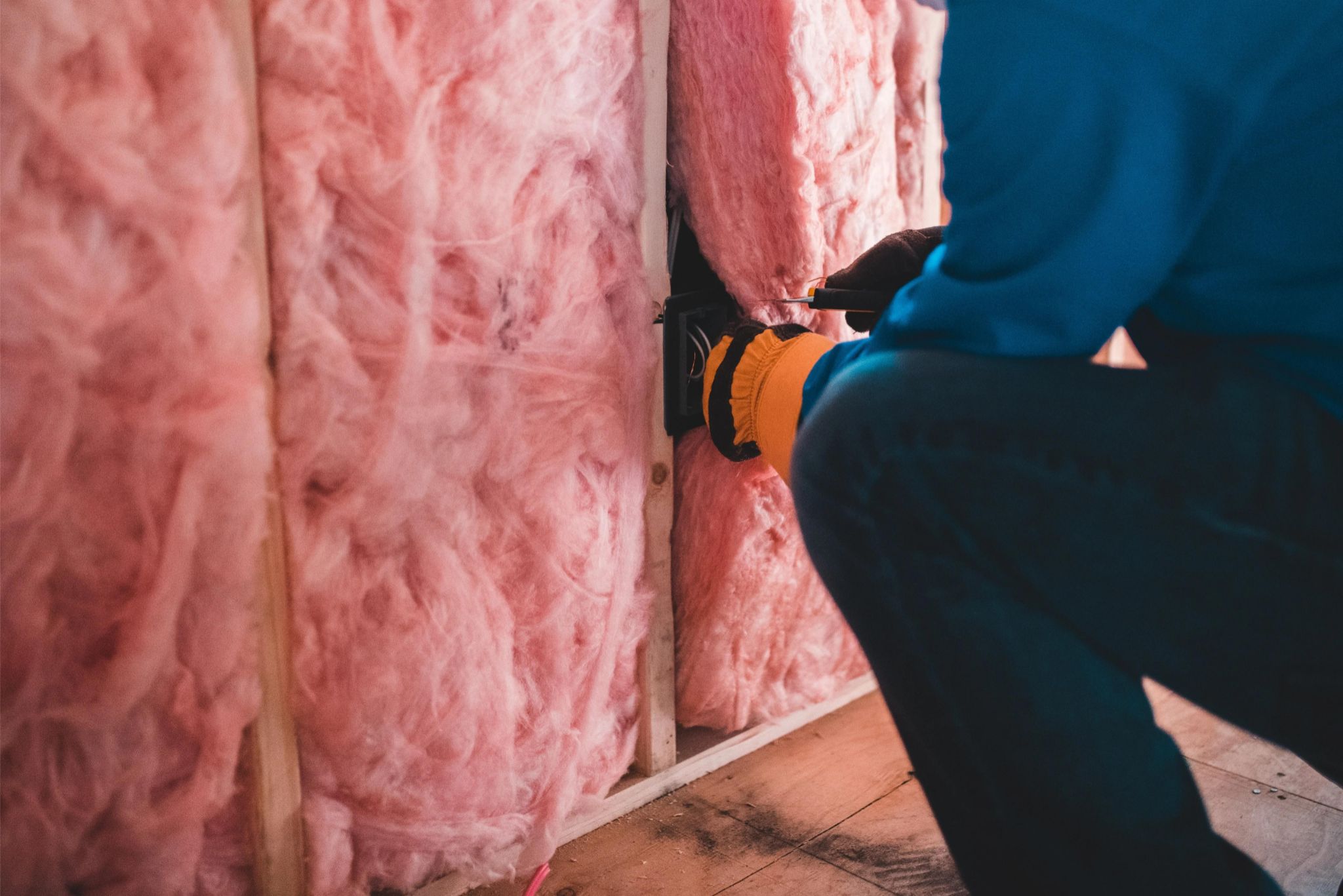

Articles
Insulation Is Used To Prevent What Heat Transfer
Modified: January 8, 2024
Insulation helps to prevent heat transfer in various applications. Learn more about the different types and benefits of insulation in our informative articles.
(Many of the links in this article redirect to a specific reviewed product. Your purchase of these products through affiliate links helps to generate commission for Storables.com, at no extra cost. Learn more)
Introduction
Insulation plays a crucial role in preventing heat transfer and maintaining comfortable indoor environments. Whether it’s a scorching summer day or a chilly winter evening, insulation acts as a barrier against the outside temperature, helping to keep the desired climate inside our homes and buildings. Understanding how insulation works and its importance in energy efficiency is essential for homeowners, builders, and anyone seeking to optimize their living or working spaces.
In simple terms, insulation refers to a material or combination of materials that are designed to resist the flow of heat. By reducing heat transfer, insulation helps to regulate indoor temperatures, resulting in reduced energy consumption and lower utility bills. It not only keeps us warm in the winter but also keeps us cool in the summer by preventing heat from entering our living areas.
Heat transfer is a natural process that occurs when there is a difference in temperature between two objects or spaces. It can occur through three main mechanisms: conduction, convection, and radiation. Understanding these mechanisms is essential in comprehending how insulation works to prevent heat transfer.
In the following sections, we will delve deeper into the different types of heat transfer and explore how insulation helps to mitigate each of these processes. We will also discuss various insulation strategies and materials commonly used in buildings to improve energy efficiency.
So, join us as we uncover the science behind insulation and how it aids in preventing heat transfer, making our living spaces comfortable and energy-efficient.
Key Takeaways:
- Insulation acts as a thermal barrier, reducing heat transfer through conduction, convection, and radiation. This enhances energy efficiency, maintains comfortable indoor temperatures, and contributes to a sustainable living environment.
- Proper insulation selection, installation, and maintenance are crucial for optimal performance. Understanding common insulation materials and strategies for effective insulation helps maximize energy efficiency and comfort in buildings.
Read more: What Printer To Use For Heat Transfer Paper
Definition of Insulation
Insulation, in the context of heat transfer, refers to the use of materials or techniques that impede or reduce the flow of heat between two substances or spaces. It is primarily used in buildings, where it acts as a thermal barrier to minimize heat transfer through walls, roofs, floors, and other structural elements. Insulation can also be found in various industrial applications, such as piping, equipment, and appliances.
The main purpose of insulation is to create a more energy-efficient and comfortable environment by reducing the heat exchange between the interior and exterior of a structure. It helps to maintain desired indoor temperatures, minimize energy loss, and decrease the reliance on heating and cooling systems.
Insulating materials are chosen based on their ability to resist heat transfer, often measured by their thermal resistance or R-value. The R-value represents the material’s resistance to heat flow, with a higher value indicating a greater insulating capability. Different insulation materials have different R-values, and the appropriate choice depends on factors such as climate, building design, and budget.
Insulation can be made from a variety of materials, including fiberglass, cellulose, foam, rockwool, and reflective materials. These materials are typically installed within the walls, ceilings, floors, and attics of buildings, forming a barrier that slows down the movement of heat.
It is important to note that insulation is not solely focused on preventing heat transfer. It also helps to reduce sound transmission, acting as a sound barrier between different areas of a building.
Ultimately, the purpose of insulation is to improve energy efficiency, reduce heating and cooling costs, enhance occupant comfort, and contribute to a sustainable living environment. By effectively minimizing heat transfer, insulation plays a vital role in creating energy-efficient and comfortable spaces for both residential and commercial purposes.
Understanding Heat Transfer
In order to grasp the significance of insulation in preventing heat transfer, it is essential to understand the fundamental concept of heat transfer itself. Heat transfer refers to the movement of thermal energy from one object or substance to another due to a temperature difference between them.
There are three main mechanisms of heat transfer: conduction, convection, and radiation. Each mechanism plays a role in how heat is transferred and how insulation can effectively combat it.
Conduction
Conduction is the process by which heat is transferred through direct contact between two bodies or substances. When a material is heated, its molecules gain energy and vibrate, transferring this energy to neighboring molecules. This transfer occurs rapidly in materials that are good conductors of heat, such as metals, and slower in materials that are poor conductors, known as insulators.
For example, when you touch a hot pan, heat is conducted from the pan to your hand, making it feel hot. Insulation materials with low thermal conductivity, such as fiberglass or foam, are effective in reducing heat transfer through conduction by providing a barrier that inhibits the flow of heat between two objects.
Convection
Convection is the transfer of heat through the movement of fluids, either gas or liquid. It occurs when heated particles within a fluid become less dense and rise, carrying heat with them. Conversely, cooler particles sink, creating a circulation of warm and cool fluid. This process is highly efficient in transferring heat.
Convection is commonly experienced in everyday life. For example, when you turn on a heater, warm air rises and displaces the cooler air, creating a convection current that distributes heat throughout the room. Insulation helps to reduce heat transfer through convection by minimizing air movement within the building envelope, preventing warm air from escaping and cool air from entering.
Radiation
Radiation is the transfer of heat through electromagnetic waves. Unlike conduction and convection, radiation does not require a medium or direct contact to transfer heat. Instead, it propagates through space, heating objects that absorb the radiation. This is how heat from the sun reaches the Earth, and how heat is radiated from a hot stove.
Insulation can also mitigate heat transfer through radiation. Materials with reflective surfaces, such as aluminum foils, can reflect radiant heat away from the building, preventing it from entering and warming up the interior space.
Understanding these mechanisms of heat transfer is crucial when it comes to choosing insulation materials and techniques that effectively combat heat flow. By addressing all three types of heat transfer, insulation contributes significantly to energy efficiency and maintaining comfortable indoor environments.
Types of Heat Transfer
In order to fully comprehend the role of insulation in preventing heat transfer, it is important to have a clear understanding of the different types of heat transfer that occur in various scenarios. Heat transfer can be categorized into three main mechanisms: conduction, convection, and radiation.
Conduction
Conduction is the transfer of heat through direct contact between two objects or substances. In this process, heat energy is transferred from the hotter object to the cooler one through molecular collision. Within a solid material, heat is conducted by the vibrations of atoms or molecules.
Good conductors of heat, such as metals, allow heat to transfer easily due to the high mobility of their electrons. For example, if you hold one end of a metal rod over a flame, the heat will quickly transfer from the flame to your hand. Insulators, on the other hand, are poor conductors of heat and provide resistance to the flow of heat energy.
Convection
Convection is the transfer of heat through the movement of fluids, either liquids or gases. When a fluid is heated, its molecules gain energy and become less dense. This causes the heated fluid to rise, while the cooler, denser fluid sinks. The circulation that occurs as a result of this temperature difference is known as convection currents.
Convection is responsible for the transfer of heat in many practical scenarios, such as in heating systems or natural phenomena like ocean currents and winds. In buildings, convection can cause warm air to rise and escape through gaps or leaks, resulting in heat loss. Effective insulation helps to minimize convection by creating a barrier that restricts the movement of air and prevents the loss of heated or cooled air.
Radiation
Radiation is the transfer of heat through electromagnetic waves. Unlike conduction and convection, radiation does not require a medium to transfer heat. It can travel through the vacuum of space and is not affected by the presence or absence of matter.
One common example of radiation is the heat energy that is transferred from the sun to the Earth. Another example is the heat radiated from a hot object, such as a stove or a fire. Insulation can help to minimize the effects of radiative heat transfer by reflecting the radiant heat away from surfaces or by absorbing and blocking it.
Understanding these different types of heat transfer is crucial in selecting and implementing effective insulation strategies. By addressing all three mechanisms, insulation can significantly reduce the amount of heat transfer in buildings, resulting in improved energy efficiency, reduced utility costs, and increased comfort for occupants.
Conduction
Conduction is one of the three main mechanisms of heat transfer and refers to the transfer of heat through direct contact between two objects or substances. It occurs when there is a temperature difference between the objects, causing heat energy to flow from the hotter object to the cooler one.
The transfer of heat through conduction happens at the molecular level. When an object is heated, its molecules begin to vibrate more vigorously, gaining kinetic energy. These energetic molecules then collide with neighboring molecules, transferring their energy in the process. This transfer of energy continues throughout the object, resulting in the overall transfer of heat.
Materials that are good conductors of heat, such as metals like copper and aluminum, allow heat to flow easily due to the high mobility of their electrons. In contrast, materials with low thermal conductivity, known as insulators, impede the transfer of heat. Examples of insulators include materials like wood, fiberglass, and rubber.
The rate at which heat is conducted through a material depends on several factors, including its thermal conductivity, thickness, and the temperature difference between the objects. Materials with higher thermal conductivity allow heat to transfer more quickly, while thicker materials slow down the rate of heat conduction.
In everyday life, conduction is experienced in various situations. When you touch a hot object, such as a pot on the stove, heat is transferred to your hand through conduction. Similarly, when you hold an ice cube in your hand, heat is conducted from your hand to the ice cube, causing it to melt.
Insulation plays a critical role in reducing heat transfer through conduction. By placing an insulating material between two objects with different temperatures, the flow of heat due to conduction can be significantly minimized. The insulating material acts as a barrier that inhibits the transfer of heat from the hotter object to the cooler one.
Commonly used insulation materials, such as fiberglass, foam, and cellulose, have low thermal conductivity, making them effective in reducing heat conduction. These materials form a layer of resistance that slows down the movement of heat, helping to maintain a more stable and comfortable temperature inside buildings.
In summary, conduction is the transfer of heat through direct contact between objects. It plays a significant role in heat transfer, and insulation serves as a means to reduce heat conduction by providing a barrier between objects of different temperatures. By understanding and effectively addressing conduction, insulation helps to improve energy efficiency and maintain a more comfortable indoor environment.
Convection
Convection is a mode of heat transfer that occurs through the movement of fluids, such as liquids or gases. Unlike conduction, which involves heat transfer through direct contact, convection relies on the circulation of fluid to transfer heat energy from one place to another.
The process of convection begins when a fluid, such as air or water, becomes heated. As the fluid absorbs thermal energy, its molecules gain kinetic energy and start moving more rapidly. This increase in molecular motion leads to a decrease in fluid density, causing the heated fluid to rise. As the hot fluid rises, cooler fluid takes its place, creating a circulation known as a convection current.
Convection can occur naturally, driven by temperature differences and gravity, or it can be forced, aided by mechanical means such as fans or pumps. Natural convection often takes place in everyday environments, such as the movements of warm air in a room or the flow of hot water in a pot that causes it to boil.
In buildings, convection can result in heat loss or gain, depending on the desired temperature conditions. During the winter, warm air is prone to rise and escape through gaps or leaks in the building envelope, leading to heat loss. In the summer, warmer outside air can infiltrate a building, raising the indoor temperature and increasing the load on cooling systems.
Effective insulation plays a crucial role in reducing heat transfer through convection. By creating a barrier and minimizing air movement within the building envelope, insulation helps to prevent warm air from escaping in the winter and cool air from infiltrating in the summer. This helps to maintain a more stable and comfortable indoor temperature while reducing the need for excessive heating or cooling.
There are various insulation strategies and techniques that aid in minimizing heat transfer through convection. Insulation materials, such as fiberglass, foam, or cellulose, can be installed in walls, ceilings, and floors to slow down the movement of air and reduce convective heat exchange. Additionally, properly sealing gaps, cracks, and openings in the building envelope can help to prevent unintended airflow and heat transfer.
It’s important to note that convection is not limited to air. It also occurs in liquids, such as water in a heating system or coolant in an engine. Insulating pipes and equipment helps to retain heat and improve energy efficiency by reducing heat loss through convection.
In summary, convection is a mode of heat transfer that occurs through the movement of fluids. Effective insulation aids in reducing heat transfer through convection by minimizing air movement and creating a barrier that prevents the escape of warm air or the infiltration of outside air. By addressing convection, insulation helps to improve energy efficiency and maintain a comfortable indoor environment throughout the year.
Radiation
Radiation is a mode of heat transfer that occurs through electromagnetic waves. Unlike conduction and convection, which require a medium to transfer heat, radiation can occur in a vacuum or through transparent objects, making it unique among the three mechanisms of heat transfer.
Radiation involves the emission and absorption of electromagnetic waves, which carry thermal energy. These waves can travel through space and can be absorbed or reflected by objects they encounter. Heat energy is transferred as electromagnetic waves are emitted by a hotter object and absorbed by a cooler object, resulting in a transfer of thermal energy.
The most common example of radiation is the heat energy we receive from the sun. The sun emits electromagnetic waves, primarily in the form of infrared radiation, which travel through space and reach the Earth. When these waves encounter objects on Earth, they can be absorbed, reflected, or transmitted.
In terms of heat transfer within buildings, radiation can occur between different surfaces or between objects and the environment. For example, a hot stove emits radiant heat, which can be absorbed by nearby objects, such as pots and pans. Similarly, heat radiates from the walls, windows, and roofs of a building, either transferring heat to the environment or absorbing radiant heat from the surroundings.
Insulation can help to minimize heat transfer through radiation by employing reflective materials or by absorbing and blocking radiant heat. Reflective insulation materials, such as foil-faced insulation, work by reflecting radiant heat away from the surface, thereby reducing heat gain. Additionally, some insulation materials incorporate special coatings or properties that absorb and inhibit the transmission of radiant heat.
It’s worth noting that while insulation can provide some resistance to heat transfer through radiation, it may not be the primary method of reducing heat transfer in most building scenarios. Conduction and convection typically play more significant roles. However, addressing radiant heat transfer can still contribute to improved energy efficiency and overall comfort.
In summary, radiation is a mode of heat transfer that occurs through electromagnetic waves. It can travel through a vacuum and does not require a medium for heat transfer. Insulation can help to minimize heat transfer through radiation by reflecting, absorbing, or blocking radiant energy. While radiation may not be the dominant mode of heat transfer in buildings, addressing it can contribute to a more energy-efficient and comfortable indoor environment.
Read more: How To Use VEVOR 5-In-1 Heat Transfer Press
Importance of Insulation
Insulation plays a vital role in buildings, serving as a barrier against heat transfer and offering numerous benefits to homeowners, businesses, and the environment. Understanding the importance of insulation helps us appreciate the value it brings to energy efficiency, comfort, and sustainability.
Energy Efficiency
One of the primary reasons insulation is crucial is its contribution to energy efficiency. In buildings, a significant amount of energy is lost through heat transfer across walls, roofs, floors, and windows. Insulation helps to reduce this heat transfer, minimizing the need for excessive heating or cooling. As a result, buildings with proper insulation consume less energy, leading to lower utility bills and reduced reliance on heating and cooling systems.
Comfort
Insulation directly impacts the comfort levels within a building. By reducing heat transfer, insulation helps to maintain more stable indoor temperatures throughout the year. In cold climates, insulation prevents heat loss, keeping the interior warm and cozy. On the other hand, in hot climates, insulation keeps the heat out, creating a cooler and more comfortable indoor environment. Insulation also reduces air leakage and drafts, further enhancing comfort by maintaining consistent temperatures and reducing the impact of external elements.
Noise Reduction
Insulation has benefits beyond thermal comfort. It also contributes to noise reduction by acting as a sound barrier. Insulation materials with sound-absorbing properties can reduce the transmission of sound waves, reducing noise pollution from outside sources or between different areas within a building. This is particularly important in residential buildings, offices, and commercial spaces where a quiet and peaceful environment is desired.
Condensation Prevention
Insulation plays a role in preventing condensation within a building. When warm air comes into contact with surfaces at a lower temperature, condensation can form, leading to moisture build-up, mold growth, and potential damage to the structure. Insulation acts as a thermal barrier, preventing the formation of condensation by reducing temperature differences between surfaces and the surrounding air.
Environmental Impact
Insulation contributes to a more sustainable living and working environment. By reducing energy consumption, it helps to decrease greenhouse gas emissions and combat climate change. In addition, insulation improves the overall energy efficiency of a building, aligning with sustainable building practices and reducing the demand for non-renewable energy sources.
In summary, insulation is of paramount importance in buildings. It provides energy efficiency, enhancing comfort, reducing noise, preventing condensation, and minimizing environmental impact. Investing in high-quality insulation is a wise choice, providing long-term benefits in terms of cost savings, comfort, and sustainability.
How Insulation Prevents Heat Transfer
Insulation is designed to impede or reduce the flow of heat between two substances or spaces. It achieves this by using materials with properties that slow down the transfer of thermal energy. Understanding how insulation works in preventing heat transfer is key to appreciating its effectiveness in maintaining comfortable indoor environments and improving energy efficiency.
Insulation prevents heat transfer through a combination of three primary mechanisms: conduction, convection, and radiation.
Conduction:
Insulation materials that are poor conductors of heat, known as thermal insulators, act as barriers to slow down the flow of heat through conduction. When there is a temperature difference between two objects in contact, heat energy naturally transfers through direct molecular collision. Insulation materials, such as fiberglass, foam, or cellulose, have low thermal conductivity and provide resistance to heat flow. By placing insulation between two objects with different temperatures, the conduction of heat is significantly reduced.
Read more: What Is Blanket Insulation Used For
Convection:
Effective insulation also helps to minimize heat transfer through convection. Convection occurs when heated fluid, such as air or water, rises and cooler fluid takes its place, creating a circulation of warmth. Insulation materials restrict air movement and the resulting convection currents. By doing so, they prevent the escape of warm air during the winter and the infiltration of hot air during the summer. This maintains a more consistent indoor temperature and reduces the reliance on heating and cooling systems.
Radiation:
Insulation can also mitigate heat transfer through radiation. Materials with reflective surfaces, such as aluminum foils integrated into insulation products, reflect radiant heat away from the surface. This prevents the absorption of radiant energy by the insulation and helps to maintain a more stable indoor environment.
In addition to these mechanisms of heat transfer, effective insulation also reduces air leakage and drafts, further minimizing heat transfer through gaps and openings in the building envelope.
To ensure the maximum effectiveness of insulation in preventing heat transfer, proper installation is crucial. Gaps, cracks, and voids in insulation can compromise its performance by allowing heat to bypass the insulation barrier. It is essential to seal these gaps and ensure consistent coverage of insulation throughout the building envelope.
Ultimately, insulation acts as a thermal barrier, slowing down the movement of heat through conduction, convection, and radiation. By addressing these heat transfer mechanisms, insulation helps to maintain a comfortable indoor temperature, reduce energy consumption, and contribute to greater energy efficiency in buildings.
Strategies for Effective Insulation
To ensure effective insulation and optimize its performance in preventing heat transfer, several key strategies should be considered. These strategies focus on choosing the right insulation materials, proper installation techniques, and addressing potential areas of thermal bridging or air leakage. By implementing these strategies, you can maximize the energy efficiency and comfort of your building.
1. Understand Building Codes and Regulations:
Be familiar with local building codes and regulations regarding insulation requirements. This will help you determine the minimum R-value or thermal resistance required for different parts of your building, such as walls, roofs, and floors.
Read more: What Is Reflective Insulation Used For
2. Choose Insulation Materials Wisely:
Select insulation materials that are appropriate for your specific application and climate. Consider factors such as thermal resistance (R-value), vapor permeability, fire resistance, and environmental impact. Common insulation materials include fiberglass, cellulose, foam, rockwool, and reflective materials. Consult with an insulation professional to determine the best option for your needs.
3. Properly Install Insulation:
Ensure insulation is installed correctly and with attention to detail. Gaps, voids, or compression of insulation can compromise its effectiveness. Follow manufacturer guidelines and consider hiring a professional insulation installer for complex or large-scale projects.
4. Address Thermal Bridging:
Thermal bridging is the transfer of heat through a more conductive material that bypasses insulation. Identify areas where thermal bridging may occur, such as through metal studs, concrete slabs, or windows. Use insulation strategies like thermal break materials, cavity fillers, or exterior insulation to minimize thermal bridging and maintain consistent insulation coverage.
5. Seal Air Leaks:
Air leakage can significantly impact the effectiveness of insulation. Seal gaps, cracks, and openings in the building envelope to minimize air infiltration and heat loss. Use weatherstripping, caulk, or spray foam insulation to seal gaps around windows, doors, electrical outlets, and plumbing penetrations.
Read more: What Is Fanfold Insulation Used For
6. Insulate Ducts and Pipes:
Don’t overlook insulating ductwork and pipes. Uninsulated ducts and pipes can lose or gain heat as air or water travels through them, resulting in energy loss. Insulating these systems helps to maintain the desired temperature of conditioned air or water, improving energy efficiency and preventing heat transfer to unconditioned spaces.
7. Consider Insulation Thickness:
The thickness of insulation can impact its thermal resistance. In areas with colder climates, thicker insulation may be required to achieve optimal thermal performance. Consult with an insulation professional or refer to building codes to determine the appropriate insulation thickness for your specific application.
8. Regularly Maintain Insulation:
Maintain your insulation over time to ensure its effectiveness. Check for signs of damage, moisture accumulation, or deterioration that could impact insulation performance. Replace or repair insulation as needed to maintain its energy-saving and comfort-enhancing properties.
By implementing these strategies, you can enhance the effectiveness of insulation in preventing heat transfer, improving energy efficiency, and creating a more comfortable living or working environment. Consult with insulation professionals or energy auditors for expert advice tailored to your specific building and insulation needs.
Common Insulation Materials
In the world of insulation, there are various materials available, each with its unique properties and suitability for different applications. Understanding the common insulation materials can help you make informed decisions when it comes to selecting the right insulation for your building. Here are some of the most commonly used insulation materials:
Read more: What Is R-7 Insulation Used For
1. Fiberglass:
Fiberglass insulation is one of the most widely used and recognized insulation materials. It is made of tiny glass fibers that are arranged into batts or blown-in loose fill. Fiberglass insulation is lightweight, non-combustible, and known for its excellent thermal resistance. It is commonly used in walls, attics, and floors, offering effective insulation against heat transfer.
2. Cellulose:
Cellulose insulation is made from recycled paper and treated with fire-resistant chemicals. It is available in loose-fill form and can be blown into wall cavities or attics. Cellulose insulation provides good thermal resistance and is known for its effective soundproofing qualities. It is a sustainable option and offers excellent value for money.
3. Foam Insulation:
Foam insulation is available in two main types: spray foam and rigid foam. Spray foam insulation is a liquid foam that expands upon application, filling gaps and crevices. It offers excellent air sealing properties and can be used in various building components. Rigid foam insulation, on the other hand, comes in rigid boards or panels and is commonly used in walls, roofs, and foundations. Foam insulation provides high thermal resistance and excellent moisture barrier properties.
4. Mineral Wool:
Mineral wool insulation is made from molten rock or slag spun into fibers. It is available in batts or loose fill, offering good thermal insulation and sound absorption properties. Mineral wool insulation is non-combustible, provides resistance against mold and pests, and can withstand high temperatures. It is commonly used in walls, attics, and roofs.
Read more: What Insulation To Use For Exterior Walls
5. Reflective Insulation:
Reflective insulation consists of multiple layers of aluminum foil or a metallic coating that reflects radiant heat. It is often used in combination with other insulation materials, serving as a radiant barrier to prevent heat transfer through radiation. Reflective insulation is commonly used in attics, roofs, and crawl spaces to reduce heat gain during the summer.
6. Polyurethane (PUR) and Polyisocyanurate (PIR) Foam:
Polyurethane and Polyisocyanurate foam insulation are commonly used in spray foam or rigid panel forms. They offer high thermal resistance and excellent moisture resistance properties. These materials provide a strong air barrier and can be used in various building components, including walls, roofs, and foundations.
These are just a few of the common insulation materials available in the market. Other options include natural materials like wool or cotton, as well as newer technologies such as aerogel insulation. When selecting insulation materials, consider factors such as thermal resistance, fire resistance, moisture resistance, environmental impact, and compatibility with your building’s structure and climate.
Consult with insulation professionals or suppliers to determine the most suitable insulation material for your specific application, ensuring optimal energy efficiency and comfort in your building.
Conclusion
Insulation is a critical component in buildings, playing a key role in preventing heat transfer and improving energy efficiency. By understanding the mechanisms of heat transfer and the importance of insulation, we can create comfortable and sustainable living or working environments.
Through conduction, convection, and radiation, heat transfer occurs naturally between objects or substances with different temperatures. Insulation works by reducing the flow of heat through these mechanisms, effectively creating a thermal barrier that helps maintain desired indoor temperatures.
The significance of insulation cannot be overstated. It enhances energy efficiency by reducing the need for excessive heating or cooling, resulting in lower utility bills and reduced reliance on non-renewable energy sources. Additionally, insulation improves overall comfort by creating a more stable indoor temperature, reducing noise transmission, and preventing condensation.
To ensure effective insulation, it is important to select appropriate insulation materials based on factors such as thermal resistance, vapor permeability, and fire resistance. Proper installation techniques, along with addressing thermal bridging and sealing air leaks, are essential for optimal performance.
Some common insulation materials include fiberglass, cellulose, foam, mineral wool, reflective insulation, and polyurethane foam. Each material has its unique properties and suitability for different building applications.
In conclusion, insulation is a vital component in buildings for energy efficiency, comfort, and sustainability. By reducing heat transfer through conduction, convection, and radiation, insulation contributes to lower energy consumption, enhanced occupant comfort, and a reduced carbon footprint.
Investing in effective insulation not only contributes to cost savings but also promotes a healthier and more sustainable built environment. It is important to consult with insulation professionals, adhere to building codes and regulations, and regularly maintain insulation to ensure its long-term effectiveness.
Ultimately, insulation is a valuable investment that pays off in terms of energy efficiency, comfort, and environmental stewardship, making our buildings and homes more efficient and enjoyable places to live and work.
Frequently Asked Questions about Insulation Is Used To Prevent What Heat Transfer
Was this page helpful?
At Storables.com, we guarantee accurate and reliable information. Our content, validated by Expert Board Contributors, is crafted following stringent Editorial Policies. We're committed to providing you with well-researched, expert-backed insights for all your informational needs.
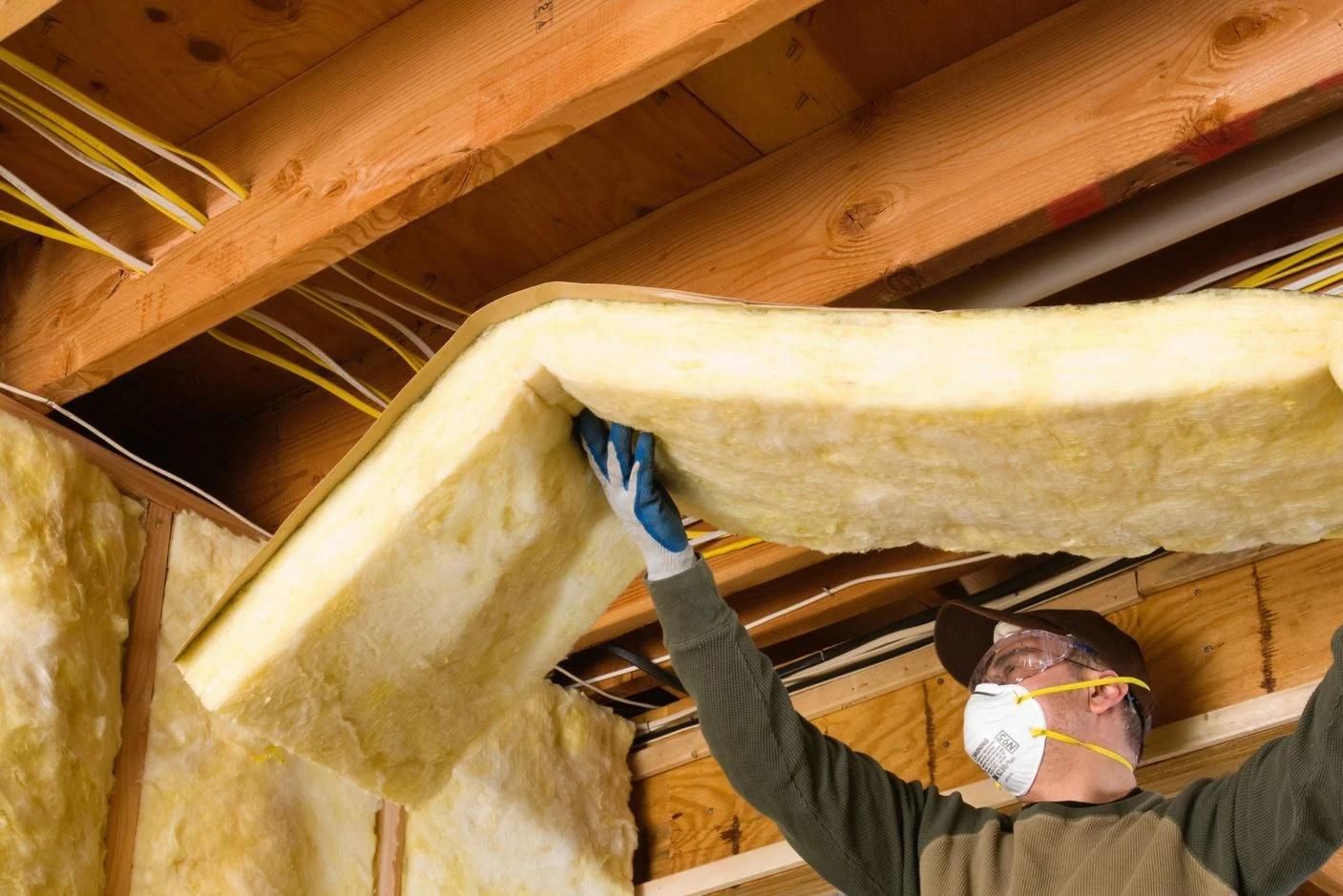
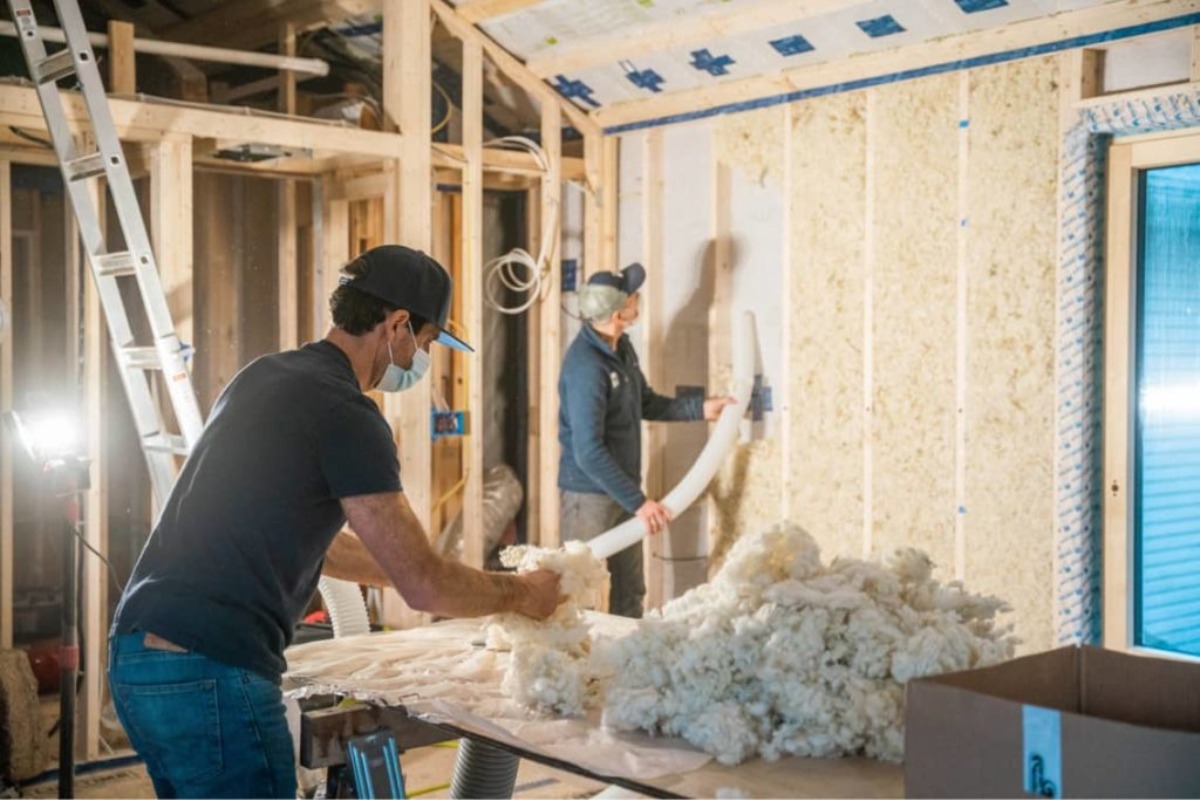
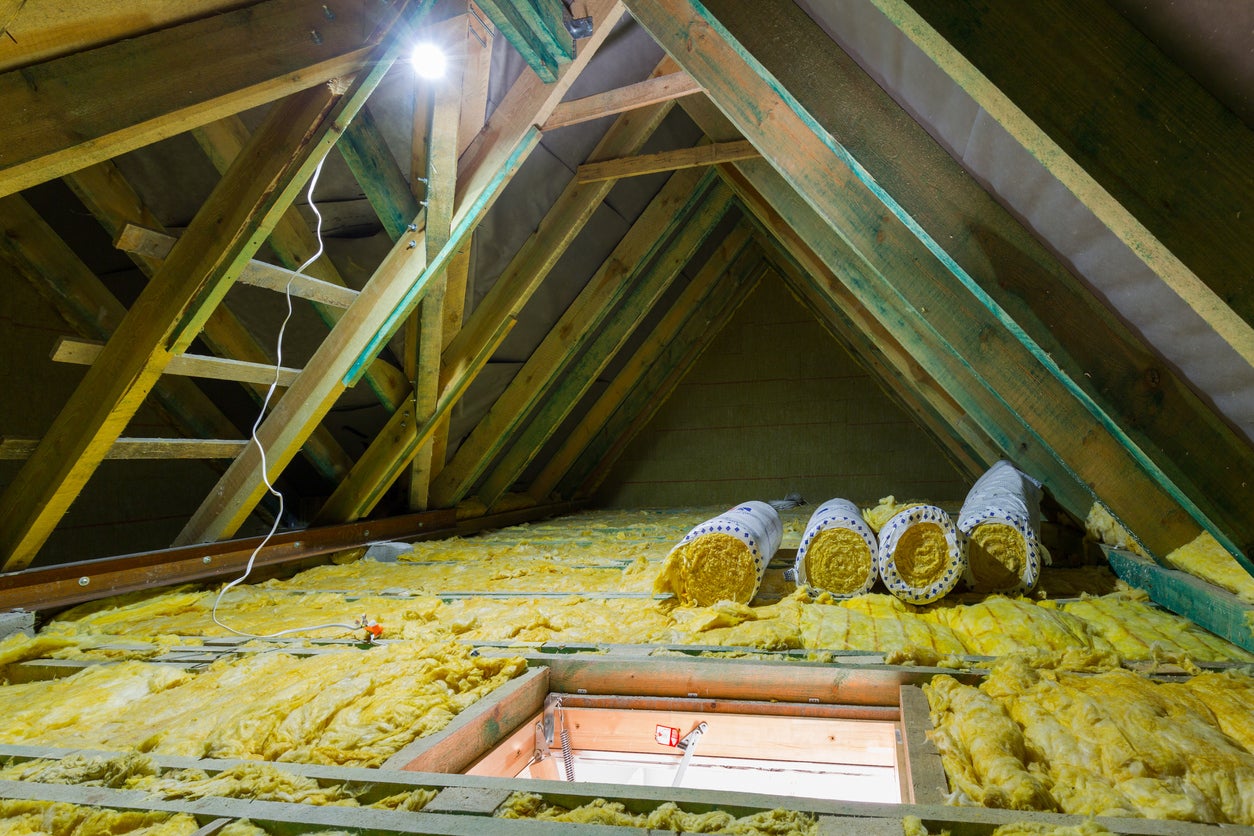

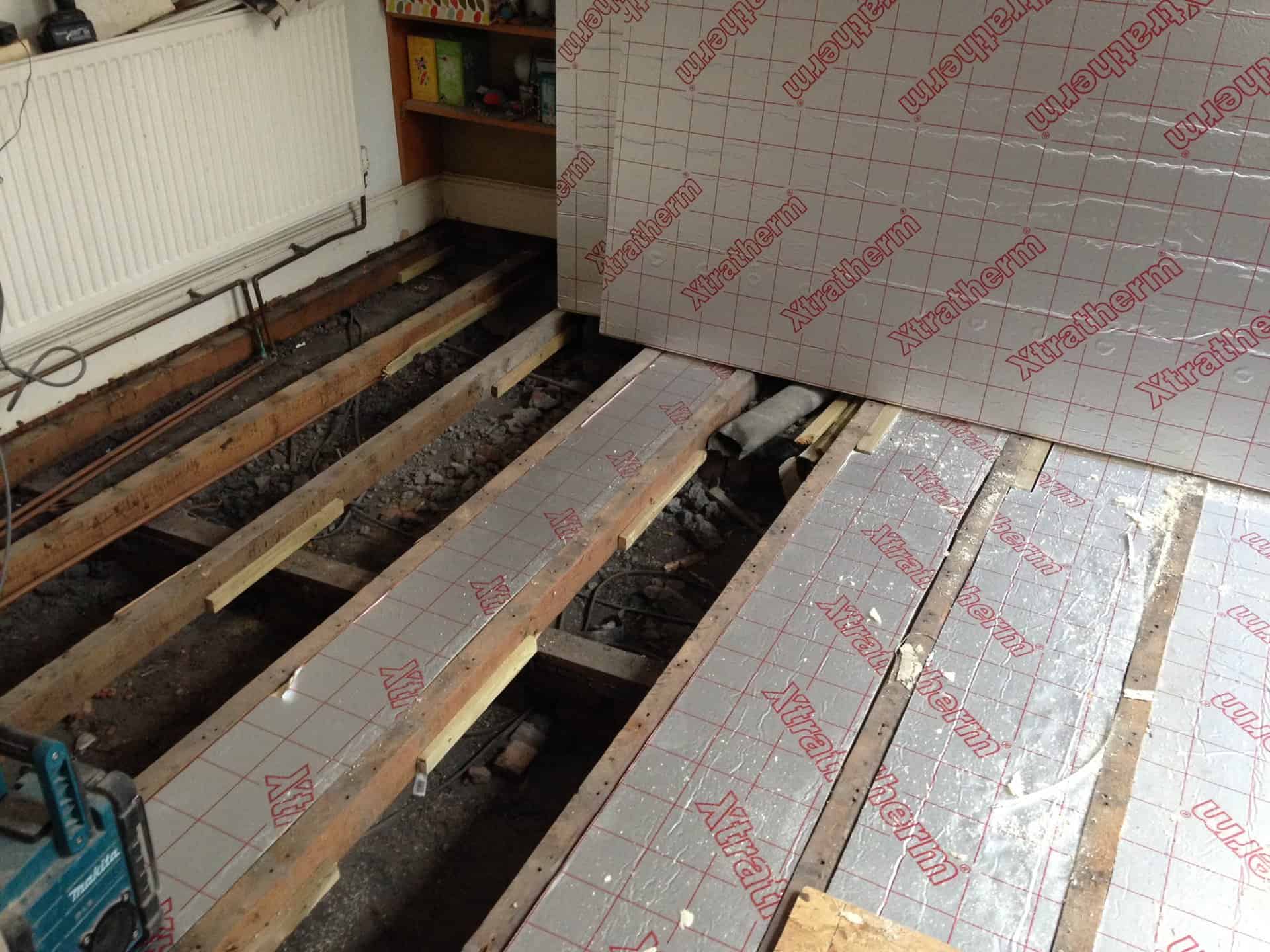
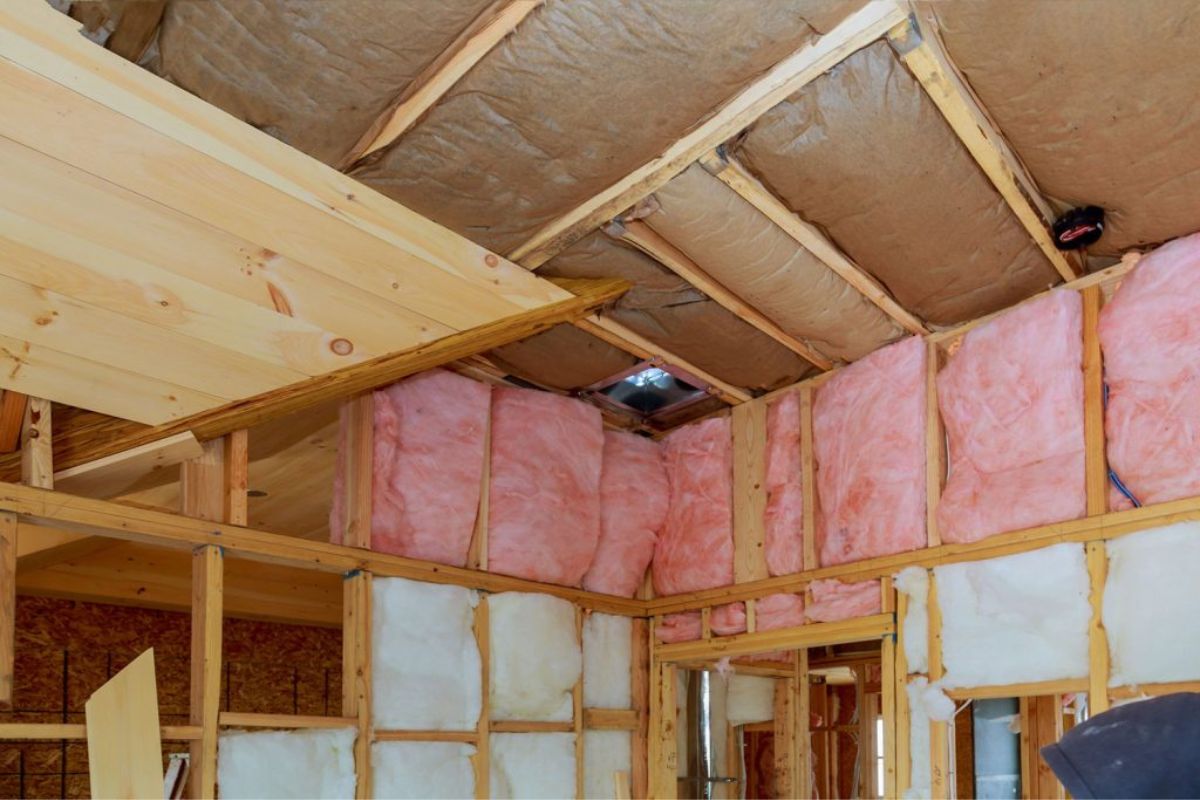

0 thoughts on “Insulation Is Used To Prevent What Heat Transfer”